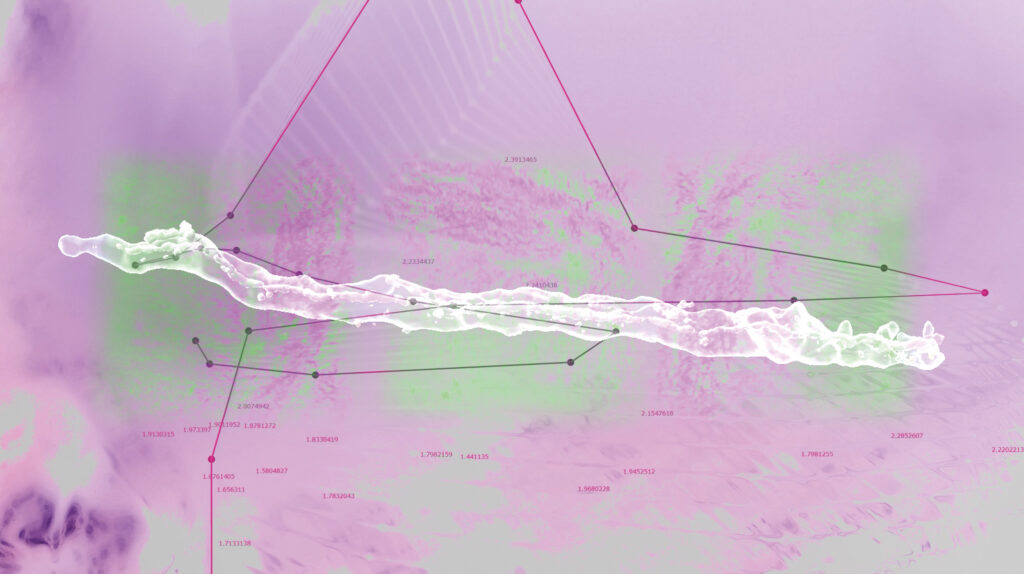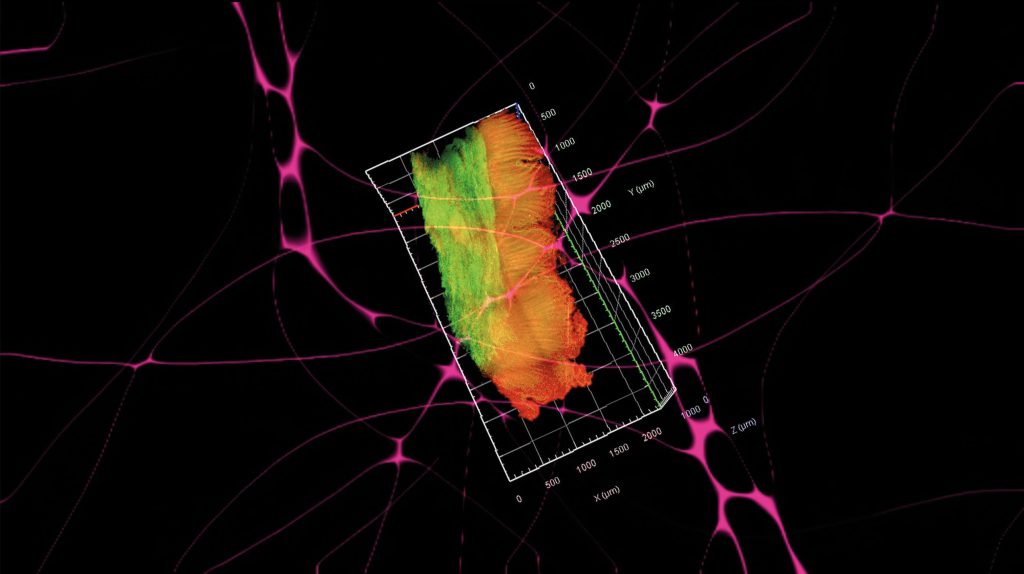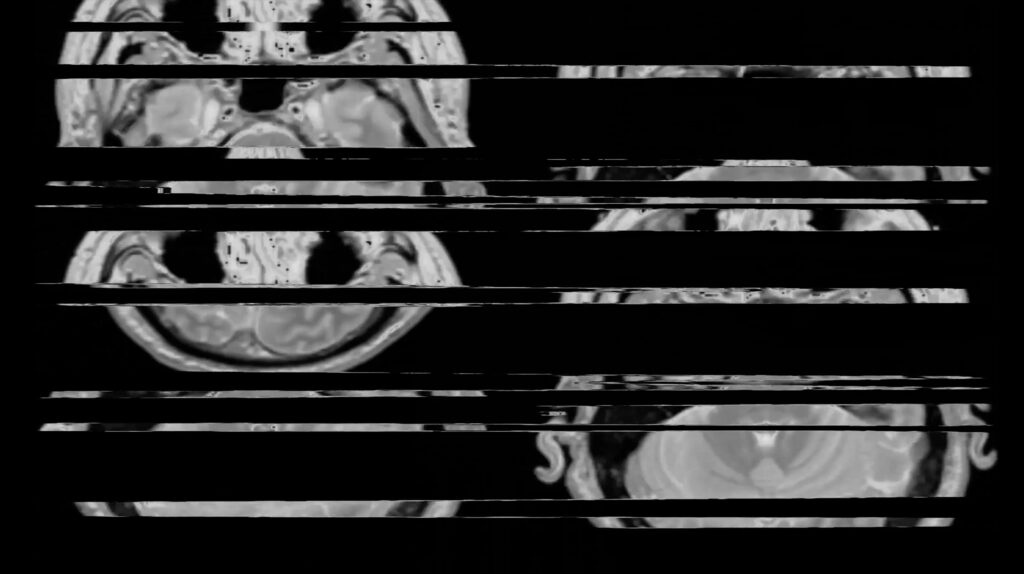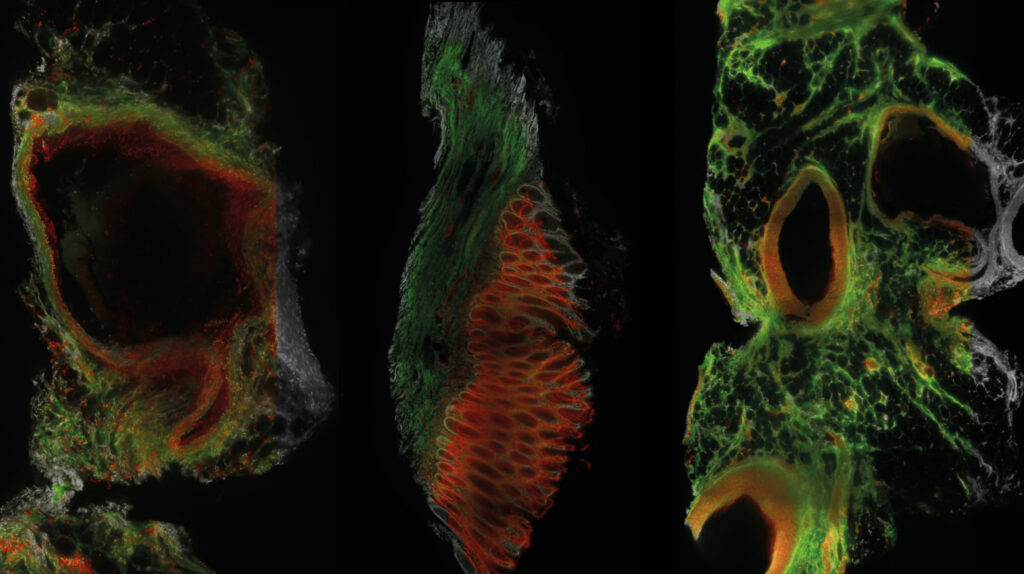Data into Flesh, Flesh into Data

“Detecting cuts is making them.” Imaging technologies have been attempting to turn bodies into datasets, to reproduce and simulate a readable and writable volume of bodies in silico.
This video speaks of the body, data, and the transformation between them from the embodied perspective of the interstitial fluid, the fluid between cells. Wandering and thinking with the amorphous liquid network of relations circulating around the body, we will look into tissue staining and digital segmentation and their similarities — both reduce ambiguity, build contrast, define structure and make visible. Here visibility becomes a matter of dimension, projection, axis, and rotation. Once turned into data, both corporeal flesh and digital flesh become operable, entering a recursive simulation in which depths and densities can be sliced, false-colored, navigated, enlarged, rotated and stacked back into three dimensions. The materiality of the body is reworked according to the logic of computer storage and computer vision to reproduce a stable, operable body of volume.
Bodies into datasets, datasets into flesh, memories into algorithms, algorithms into membranes from collective remembrances.



